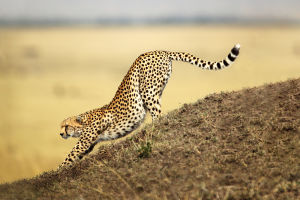Giraffe Facts Revealed
Hey Lykkers! Have you ever wondered what it would be like to meet one of the tallest creatures on Earth?
Well, that's exactly what we got to experience when we spent some time learning about giraffes, the graceful giants of the animal kingdom!
Giraffes: The Towering Wonders of Nature
Giraffes are easily recognizable due to their long necks, tall stature, and distinctive patchy coat. Standing at 14 to 18 feet tall for males and slightly shorter for females, giraffes are the tallest land mammals on the planet. These majestic animals are found primarily in sub-Saharan Africa, where they roam open savannas, grasslands, and woodlands.
Their towering height gives them an advantage when it comes to feeding. With necks that can stretch up to 6 feet long, giraffes can reach the highest branches of trees, particularly acacia trees, which are their primary food source. Their prehensile tongue, which is about 18 inches long, helps them grab leaves with impressive precision. Giraffes feed mostly on leaves, fruits, and flowers from trees, though they occasionally graze on grasses.
Giraffe Behavior and Social Life
Despite their size, giraffes are gentle and peaceful creatures. They live in loose herds, usually composed of females and their calves, while males often roam alone or form small bachelor groups. The social structure of giraffes is quite fluid, and they do not have a strict hierarchy like some other animals. Instead, they rely on their vision and height to stay alert to potential predators such as lions or hyenas. Their keen sense of sight allows them to spot danger from miles away.
The giraffe's long neck also plays a role in their social interactions. When males compete for mates, they engage in a behavior called “necking,” where they swing their necks like massive whips to strike one another. This battle determines which male will win the attention of the female, with the victor gaining the right to mate.
Endangered Giraffes: Species in Africa face threat of extinction
Video by TRT World
Why Are Giraffes Endangered?
While giraffes seem to have it all, they face growing threats to their survival. Habitat loss, poaching, and human-wildlife conflict are major challenges that impact giraffe populations. As human settlements expand, giraffes lose access to their natural habitats, and their food sources become scarce. Additionally, giraffes are often hunted for their skins, meat, and bones, which are sold on the black market.
Currently, giraffes are listed as vulnerable by the International Union for Conservation of Nature (IUCN). Several conservation programs are working to protect giraffe habitats, promote awareness, and prevent illegal poaching. By supporting these efforts, we can help ensure that future generations will continue to witness the majesty of giraffes in the wild.
Interesting Giraffe Facts
Here are some fun facts about giraffes that you might not know:
• Giraffes have a heart weighing about 25 pounds, which is necessary to pump blood up to their heads.
• Despite their long necks, giraffes have only seven neck vertebrae, the same number as humans!
• Giraffes can run up to 35 miles per hour for short distances.
Giraffes are truly amazing creatures, and learning about them has been a fascinating experience. Their elegance and incredible adaptations make them one of the most remarkable animals in the animal kingdom.


